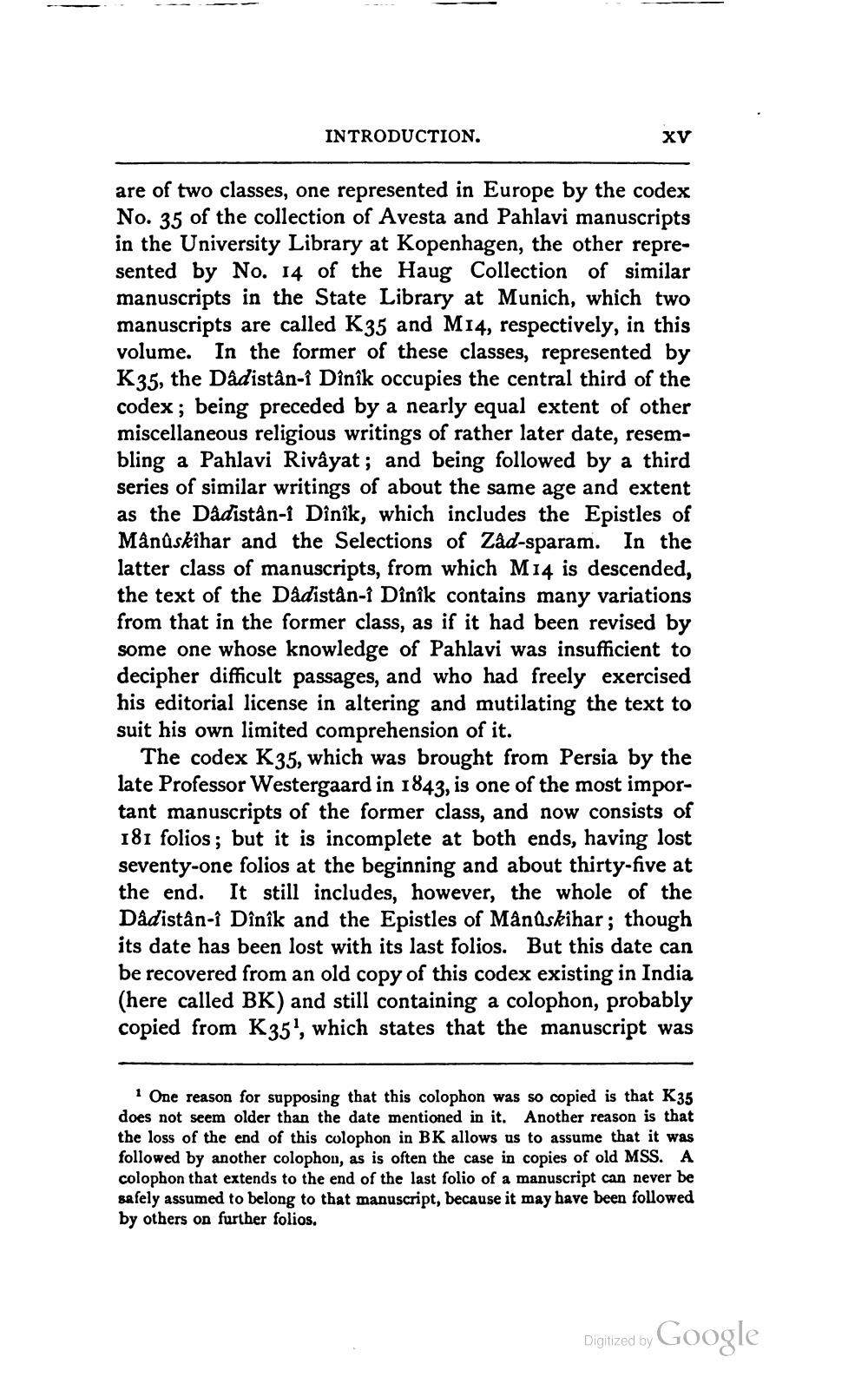________________
INTRODUCTION.
ху
are of two classes, one represented in Europe by the codex No. 35 of the collection of Avesta and Pahlavi manuscripts in the University Library at Kopenhagen, the other represented by No. 14 of the Haug Collection of similar manuscripts in the State Library at Munich, which two manuscripts are called K35 and M14, respectively, in this volume. In the former of these classes, represented by K35, the Dådistân-î Dînîk occupies the central third of the codex; being preceded by a nearly equal extent of other miscellaneous religious writings of rather later date, resembling a Pahlavi Rivậyat; and being followed by a third series of similar writings of about the same age and extent as the Dådistàn-î Dînîk, which includes the Epistles of Månûskîhar and the Selections of Zad-sparam. In the latter class of manuscripts, from which M14 is descended, the text of the Dadistân-î Dînîk contains many variations from that in the former class, as if it had been revised by some one whose knowledge of Pahlavi was insufficient to decipher difficult passages, and who had freely exercised his editorial license in altering and mutilating the text to suit his own limited comprehension of it.
The codex K35, which was brought from Persia by the late Professor Westergaard in 1843, is one of the most important manuscripts of the former class, and now consists of 181 folios; but it is incomplete at both ends, having lost seventy-one folios at the beginning and about thirty-five at the end. It still includes, however, the whole of the Dådistân-î Dînîk and the Epistles of Mandskihar; though its date has been lost with its last folios. But this date can be recovered from an old copy of this codex existing in India (here called BK) and still containing a colophon, probably copied from K35', which states that the manuscript was
One reason for supposing that this colophon was so copied is that K35 does not seem older than the date mentioned in it. Another reason is that the loss of the end of this colophon in BK allows us to assume that it was followed by another colophon, as is often the case in copies of old MSS. A colophon that extends to the end of the last folio of a manuscript can never be safely assumed to belong to that manuscript, because it may have been followed by others on further folios,
Digitized by Google




